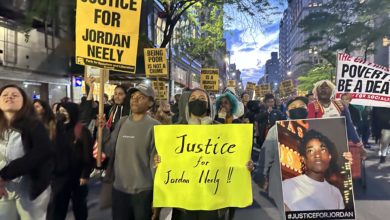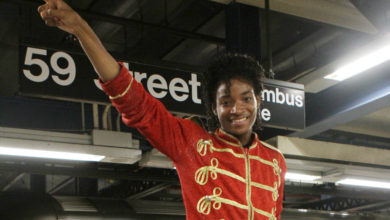
The death penalty is used constantly and excessively by advocates of “law and order” who cite capital punishment as a crime deterrent in the United States. In essence, the death penalty is little more than legal lynching. As shown with the suspension of the death penalty in Illinois, many of the mostly Black death row inmates have been thrown in prison unjustly, many on trumped up charges perpetrated by racist police tactics.
Stanley “Tookie” Williams is just one example. Williams hails from Los Angeles, and is known to the community as founder of the street organization known as the Crips. Convicted of murdering four people in 1979, Williams has remained on death row for 24 years. During his time in prison he turned his life around and worked to create a positive alternative for youth in the United States.
Most notably, he created “Tookie’s Peace Protocol,” a recipe for gang truce that was a major part of the landmark 1992 Los Angeles gang truce and most recently an aid to the 2005 Newark gang truce. Williams has been an advocate for peace in the streets between the many predominantly Black and Latino street gangs.
Williams himself is asking for his sentence to be changed to life imprisonment and not death. He is scheduled to be executed on Dec. 13.
Williams’ appeals have been denied at all levels. His only hope is to receive clemency from California’s governor.
In many ways, Williams’ case highlights typical features of death penalty cases. The key evidence against Tookie Williams is that of jailhouse informants, all facing long sentences that the state offered to lessen. The Ninth Circuit Court declared that these same informants had “less-than-clean backgrounds and incentives to lie in order to obtain leniency from the state in either charging or sentencing.” One prisoner has come forward to say he witnessed Sheriff’s department deputies giving Williams’ file to one of the informants. None of the physical evidence, including fingerprints, matches Williams, nor does the description by a witness.
The prosecutor relied on blatant racism to obtain a conviction. He had the trial moved from Los Angeles to Torrance—a mostly white, affluent and conservative area. Williams’ case was tried by an all-white jury, a jury that is in no way representative of his peer group, as specified by law. In his closing remarks, the prosecutor also referred to Williams as a “Bengal tiger,” dehumanizing him and comparing him to an animal for the benefit of the all-white jury.
This same prosecutor has been censured twice by the California Supreme Court for racism.
The death penalty’s real purpose

Those who compare the death penalty to legalized lynching are doing more than making a dramatic analogy. Lynching—including the torture, killing and mutilation of Black people—was common especially in the post-Reconstruction South following the Civil War and right up through the mass civil rights movement of the 1950s and 1960s as a method of terrorizing the population and quelling any agitation for equal rights.
A clear presentation of the issue of racism and the death penalty was seen in a February 2002 American Sociological Review article, “The Political Sociology of the Death Penalty.” That article presents data showing the same states that historically had the most lynchings are also the states where the most people are executed. David Jacobs, co-author of the study, said in a 2002 press statement, “Our results suggest that the death penalty has become a sort of legal replacement for the lynchings in the past. … The results show a clear connection.” The study also shows that in these same states an increase in death sentences corresponded directly to an increase in the Black population.
Some point out that death sentences for whites also increased. Jacobs addressed this argument: “If there was clear discrimination against Blacks in death penalty sentencing, then the Supreme Court might again rule that the death penalty is unconstitutional, so there may be an effort to not discriminate when imposing the death penalty. While the connection between lynchings and death sentences is strongest when only Black death sentences are considered, the connection between lynchings in the past and contemporary death sentences is present for both Blacks and whites.” In summation, Jacobs concludes, “the main point is that our findings do not support the claims that the death penalty is administered in a color-blind fashion.”
African Americans are portrayed by the ruling class as a race of criminals, and the racist legal system leads to Blacks being incarcerated at alarming rates. African Americans’ fear of the legal process is due in no small part to the racist application of the death penalty. The intolerance and ruthlessness of the state has a chilling effect.
Fighting back
Stanley “Tookie” Williams’ case can be an important flashpoint in the fight to end the death penalty. It highlights the racism inherent in the death penalty and the whole U.S. criminal “justice” system.
The fight against this racist repression is a key component in the African American liberation struggle as well as the U.S. working class struggle. Abolishing the death penalty would take away one of the main tools of terror used to hold down the working class under capitalism.
The movement that grew in defense of revolutionary death-row political prisoner Mumia Abu-Jamal shows the potential for uniting the struggle against the death penalty with the broader struggles against racism and repression in the United States—and ultimately, against the capitalist system and its state.
Visit www.savetookie.org for more information on the case of Tookie Williams.
Stanley “Tookie” Williams, sentenced to be executed on Dec. 13.
Los Angeles protest in support of Tookie Williams.
Photo: Jeff Grace






